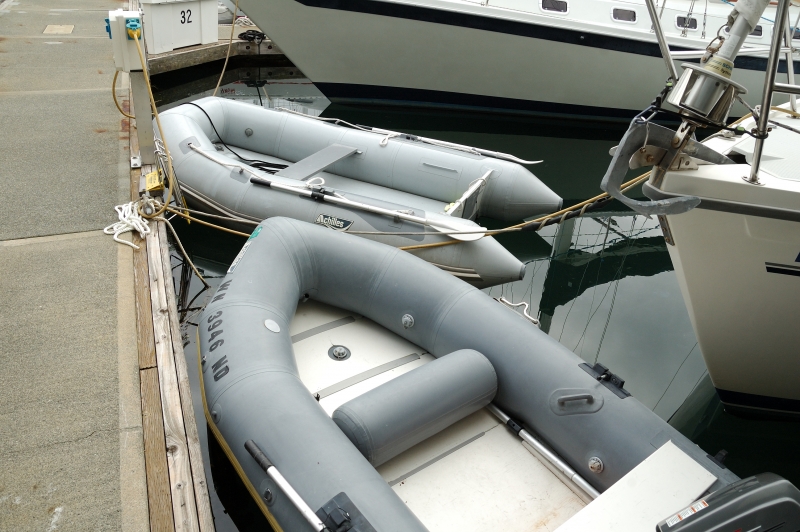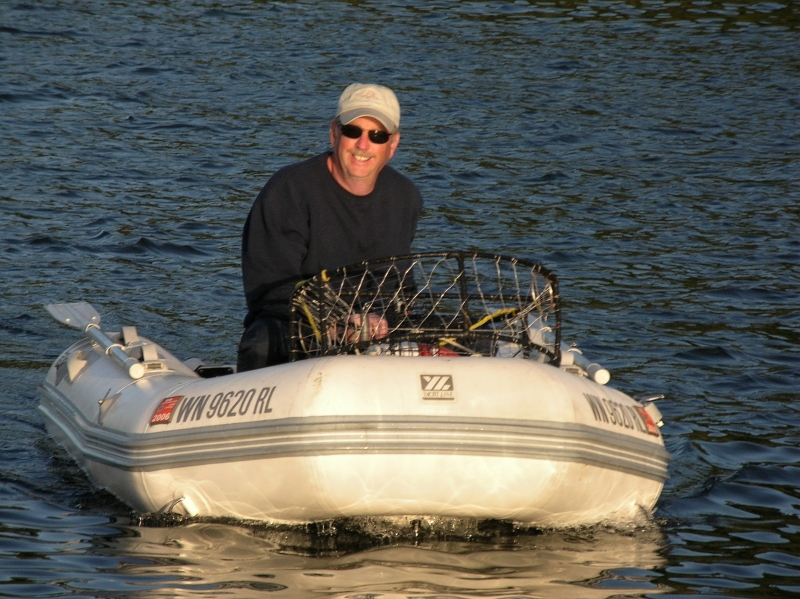PRE-SEASON INFLATABLE CARE
13th February 2023
Most inflatable boats are used as tenders and are subjected to some tough conditions, but if maintained properly they should provide 10 to 20 years of service. A little springtime preventive maintenance will help extend a tender’s life and provide a worry-free season of use.
– Start by ensuring the boat is properly inflated. Fill the aft chambers first to the manufacturer’s suggested pressure level and then the bow chamber(s). By doing the filling in this order, the torpedo shaped aft chambers are allowed to fill properly. If it’s a two chamber inflatable determine which valve will fill the bow chamber and inflate the other first. Bow-first pressurization can lead to significant problems with the seams.

-Also check davit pads and D-rings before leaving the dock to ensure they haven’t worked loose over the off-season.
-Wash the boat with a warm solution of mild boat (or dish) soap and water, using a green 3M scrubby pad. The stubborn stains may need something stronger, such as one of the many commercial cleaners available specifically for inflatable boats. Do not use citrus based cleaners, because they can melt the fabric. It is also recommended applying a coat of 303 Aerospace Protectant. This will protect the fabric from UV damage. Do not use Armorall to protect your inflatable, as it will become very slippery and present a hazard.

-While the boat is fully inflated and the valve caps are securely in place, spray the entire boat with soapy water and watch for bubbles to form, which will indicate an air leak. Clearly mark each leak with a pencil. Don’t assume there is only one leak. Then check the floor seams and bilge plug for watertightness. Suspend the fully inflated boat over dry pavement using a trailer, or a couple of sawhorses. Fill the boat with water above the floor and tube seam. If it is leaking water, a damp spot will form on the pavement, and you will know where on the boat to look. Mark the leak with a pencil.
- -Many manufacturers recommend that you take your boat to a professional for larger repairs. However, if you have a small leak, follow the directions on the patch kit. Here are some general tips:
- Ensure that the area to be patched has been wiped with MEK for PVC boats or Toluene for Hypalon boats before applying the patch.
- Be sure the adhesive is the consistency of honey, not old and dry.
- Choose a patch that extends at least 1-1/2” beyond the rip in all directions.
- Don’t patch over seams.
-Inflatable boat fabric is not only sensitive to UV Rays, but also airborne pollutants and abrasions. During the season, routinely rinse off the dinghy with fresh water so that soot and pollution don’t have time to accumulate and penetrate the protective layer, and keep the boat covered whenever it’s not in use.
These quick and easy tips should hopefully get your tender ready for the season!


